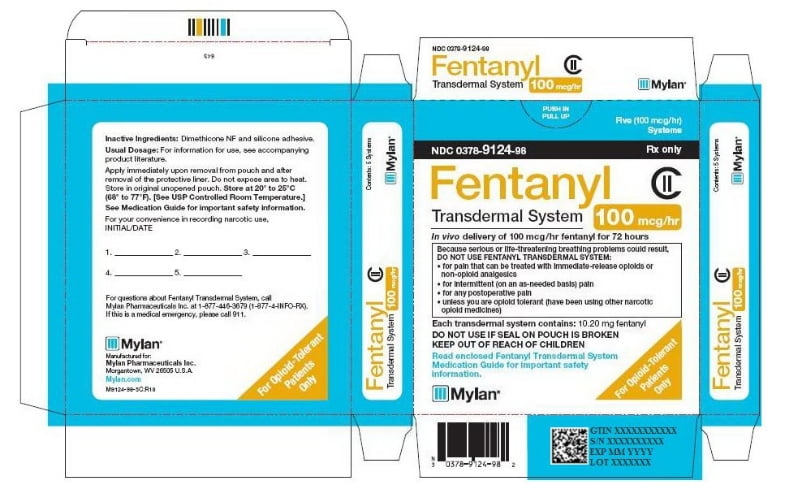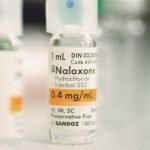Heroin And Fentanyl – Two Addictive Opioids
Heroin and fentanyl are two common opioids with significant dangers. Heroin is made using morphine, a natural substance. The Drug Enforcement Agency (DEA) has listed heroin as a Schedule I drug.
“Schedule I drugs, substances, or chemicals are defined as drugs with no currently accepted medical use and a high potential for abuse.”
Fentanyl is an opioid, but it is synthetic, meaning it is man-made.It is also incredibly dangerous, as reported by the National Institute on Drug Abuse (NIDA).
“Fentanyl is a powerful synthetic opioid analgesic that is similar to morphine but is 50 to 100 times more potent.”
Fentanyl is a schedule II drug, however, because it has accepted medicinal uses. In fact, it was developed as a prescription painkiller. That said, being a schedule II means that it is recognized to have a high abuse potential. Fentanyl is available on prescription but it is also illicitly manufactured. It is cheap and easy to obtain and also often used to fill or cut heroin.
Unfortunately, fentanyl is incredibly lethal in many different ways. Only a small dose of 0.25mg can be lethal and this opioid’s absorbed through the skin.
“The drug can be absorbed through the skin or accidentally inhaled. In 2015, a New Jersey police officer had shortness of breath, dizziness and slowed breathing after coming into contact with fentanyl.”
As a legal prescription, it is available as sublingual or buccal tablets, oral or nasal sprays, transdermal patches, and injections. When used illegally, people chew or suck on the patches, insert it into their body, or even scrape off the gel after which it is injected. In tablet form, it can be crushed and injected, smoked, or snorted.
Overdose, Side Effects, and Other Dangers
There has beena significant increase in the number of overdose deaths as a result of both fentanyl and heroin, according to the Centers for Disease Control and Prevention (CDC).
“The United States is experiencing an epidemic of drug overdose (poisoning) deaths. Since 2000, the rate of deaths from drug overdoses has increased 137%, including a 200% increase in the rate of overdose deaths involving opioids (opioid pain relievers and heroin).”
The CDC has also reported that, between 2002 and 2013, fatal heroin overdose numbers quadrupled, and fatal overdoses of fentanyl and other synthetic opioids almost doubled between 2013 and 2014.
One of the key dangers is that people often think they are using heroin, unaware of the fact that it also contains fentanyl. Because the latter is so much more potent, the toxic buildup it creates can cause an overdose at a much lower dose than heroin. When breathing slows down too much, an overdose occurs. At that point, body temperature plummets, pulse slows, and the victim often feels lethargic, drowsy, and confused. Their pupils contract to pinpoints and they may lose consciousness as well.
Any overdose can be life threatening. Narcan (naloxone) is a drug that can reverse the effects of the overdose as an opioid antagonist, but only if administered early enough. If someone overdoses on fentanyl, or on part heroin cut with fentanyl, they often require multiple naloxone doses because it is so potent.
Both opioids can also have a long term negative impact on the cardiovascular and respiratory system. Additionally, it can cause brain damage, leading to permanent cognitive problems. Those who choose to inject the substances are also at increased risk of HIV/AIDS, hepatitis C, skin abscesses, track marks, scarring, and collapsed veins.
Opioid Addiction and Dependence
Both heroin and fentanyl are known to be highly addictive drugs. Both substances, when abused, lead to a euphoric “high” that is incredibly intense. Dependence can develop very rapidly. As soon as the brain is accustomed to opioid presence, it stops absorbing, transmitting and producing functioning chemical messengers, including dopamine, which tell the body to feel pleased. Because of this chemical malfunction, the body starts to feel unbalanced, requiring the drug to once again feel “normal”. Once the effects of the drug wears off, it leads to the person experiencing significant withdrawal symptoms as well. Common symptoms are:
• Insomnia
• Agitation
• Irritability
• Anxiety
• Depression
• Flu-like symptoms
As a result, many would rather take the drug than experience these withdrawal symptoms. Unfortunately, this is a slippery slope leading to people having no more control of how much they take and when. Once drug use becomes compulsive, the chemistry of the brain has changed significantly. At this point, an addiction has developed.
As shown by research conducted by the American Society of Addiction Medicine (ASAM), addiction is a serious problem associated with opioid abuse.
“Of the 20.5 million Americans 12 or older that had a substance use disorder in 2015, 2 million had a substance use disorder involving prescription pain relievers and 591,000 had a substance use disorder involving heroin. It is estimated that 23% of individuals who use heroin develop opioid addiction.”
Both heroin and fentanyl are incredibly powerful and dangerous. It is vital that treatment options are put in place so that those who have become victims of addiction are given the help that they need. The U.S. Food and Drug Administration (FDA) has approved a number of drugs and medications to help people who have developed an opioid dependence. These include naltrexone, buprenorphine, and methadone. These are pharmaceutical drugs that have been shown to be particularly effective if offered in conjunction with counseling and other behavioral therapies. These drugs are highly useful in controlling the withdrawal symptoms, thereby helping addiction patients become more receptive to therapy as they do not feel as uncomfortable as before.
Heroin and fentanyl are short-acting drugs. This means that their effects only last for a few hours at a time. FDA-approved medication like methadone, on the other hand, is a long-acting substance, which means only a single dosage is required in a 24 hour period. It is not recommended that people go “cold turkey” if they use either fentanyl or heroin, as it is unlikely that they will be successful and relapse at that point where it is incredibly dangerous. Medication and therapy are available for patients, although it is very important that some of the barriers to access to treatment, both perceived and real, are addressed. To get the help you need or to be there for someone you love contact us for more information (855) 976-2092.
Sources
[1] Drug Scheduling. (n.d.). Retrieved from https://www.dea.gov/drug-scheduling [2] National Institute on Drug Abuse. (2016, June 6). Fentanyl. Retrieved from https://www.drugabuse.gov/drugs-abuse/fentanyl [3] Nadia Kounang, CNN. (2018, November 5). What you need to know about fentanyl. Retrieved from https://edition.cnn.com/2016/05/10/health/fentanyl-opioid-explainer/ [4] Increases in Drug and Opioid Overdose Deaths — United States, 2000–2014. (2016, January 1). Retrieved from https://www.cdc.gov/mmwr/preview/mmwrhtml/mm6450a3.htm [5] American Society of Addiction Medicine. (2016, January 1). Opioid Addiction – 2016 Facts & Figures. Retrieved from https://www.asam.org/docs/default-source/advocacy/opioid-addiction-disease-facts-figures.pdf




Leave a Reply
Want to join the discussion?Feel free to contribute!